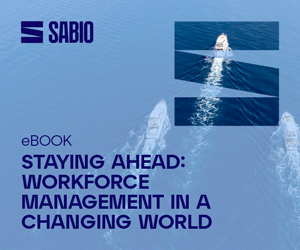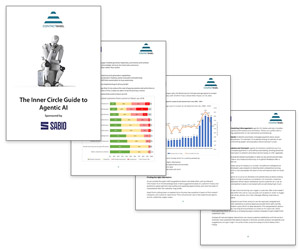It’s important for contact centre teams to recognise that their omnichannel strategy isn’t something that should be relinquished to their Digital or Marketing teams. This is particularly the case as a large proportion of digital interactions still end up in the contact centre for resolution.
However, achieving omnichannel success can be challenging when Digital teams own most of the self-service touch-points, Marketing tends to look after social service, while often only the main assisted service channels sit within the contact centre’s control.
So, if organisations are really serious about making omnichannel seamless across all channels, they’ve got to start breaking down those internal silos that can so easily lead to inconsistent context, poor service levels and customer frustration.
From a customer engagement perspective, the good news is that the largest proportion of current multichannel customer contact – such as voice, IVR, webchat and email – are still owned by the contact centre.
In order to extend that influence to other key customer interaction points, here’s my top five tips:
1. Don’t Let Poor Digital Decisions Swamp Your Contact Centre
With most people now starting their customer journeys online, they’re often only dialling into the contact centre when they have come to a digital dead end.
Unfortunately, some of the choices made digitally can have a significantly detrimental effect on contact centre productivity.
For example, having an open email address on your Contact Us page can immediately cause you to lose control of your customer demand.
Instead, organisations need to focus on creating the right Digital Front Doors, so they can effectively orchestrate the end-to-end multichannel experience offered to customers.
2. Don’t Forget to Map Your Customer Journeys
Successful multichannel engagement is all about providing customers with the right choices for their specific context.
Before adding any new channels, it’s critical to take the time to map customer journeys fully – and ensure that all possible multichannel touchpoints are integrated.
It’s only by systematically surfacing and resolving those multichannel issues that are making life harder than necessary for customers that organisations can deliver the kind of excellent experiences that keep customers coming back.
3. Don’t Overlook the Technology You Already Have in Place
Many organisations are holding off on their omnichannel strategies because they think there’s a requirement to invest significantly in new technologies.
This really isn’t the case. Indeed, by simply adding smarter services, such as predictive intelligence, to bridge the gap between digital channels and the contact centre, or smarter machine-learning-powered routing rules, you can unlock significant additional value from your existing voice infrastructure.
With omnichannel it’s all about the orchestration – and your existing contact centre technologies can already handle much of the workload.
4. Concentrate on the Channels That Your Customers Actually Want to Use
Don’t just chase after the latest channels, focus instead on the key ones where your customers engage – and do them really well. And don’t frustrate your customers with endless security requests.
It really doesn’t need to be that complex – particularly with voice and fingerprint biometrics now helping to achieve the previously incompatible goals of both enhancing security while simultaneously delivering reductions in customer effort.
5. Don’t Forget to Treat Omnichannel as an Iterative Process
Now, more than ever, customer engagement isn’t standing still.
Whether it’s the continued adoption of AI technologies, greater customer insight from connected devices and Internet of Things sensors, greater connectivity through WebRTC or simply evolving customer demands – disruption is the new normal and the pace of change is only going to accelerate.
Author: Guest Author
Published On: 4th Apr 2017 - Last modified: 5th Apr 2017
Read more about - Archived Content, Sabio











